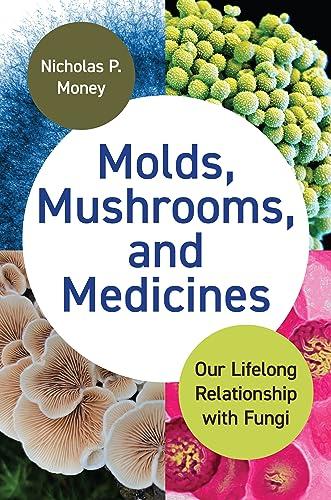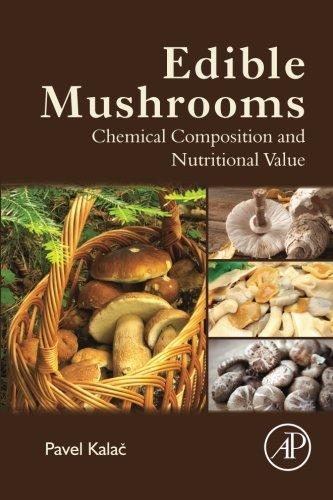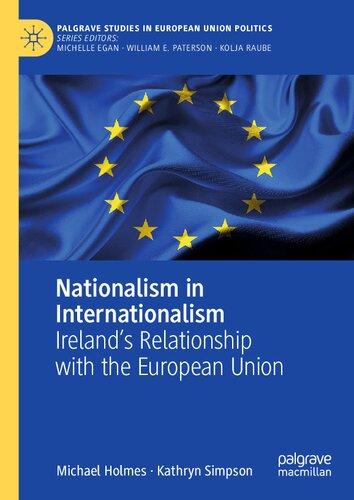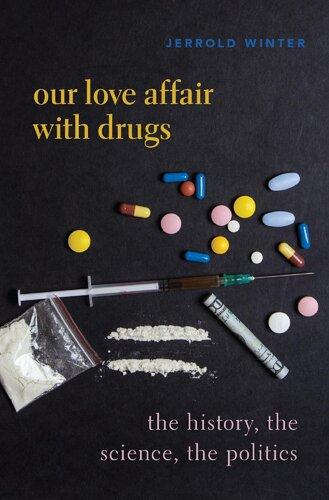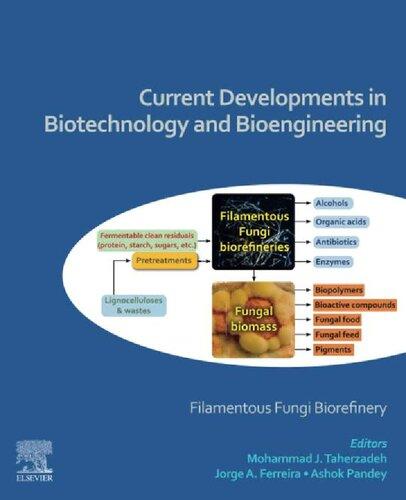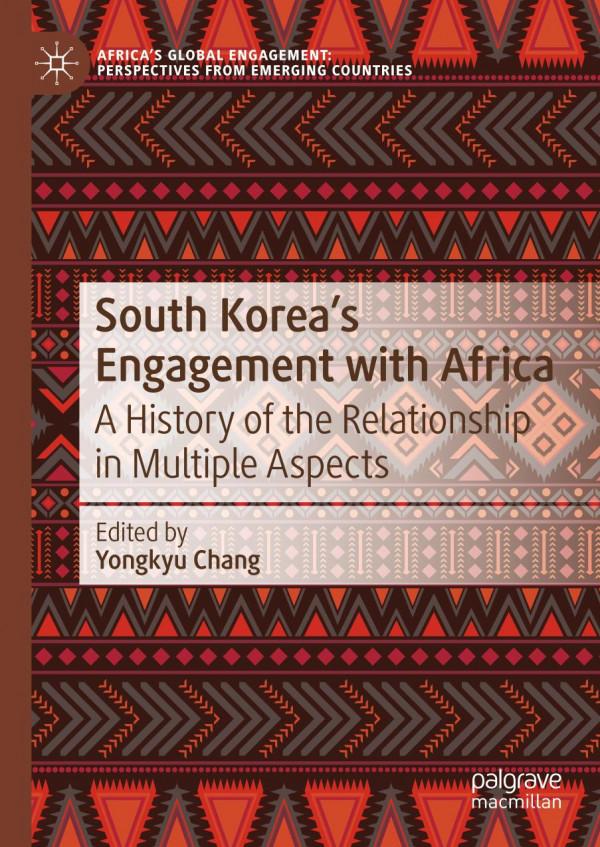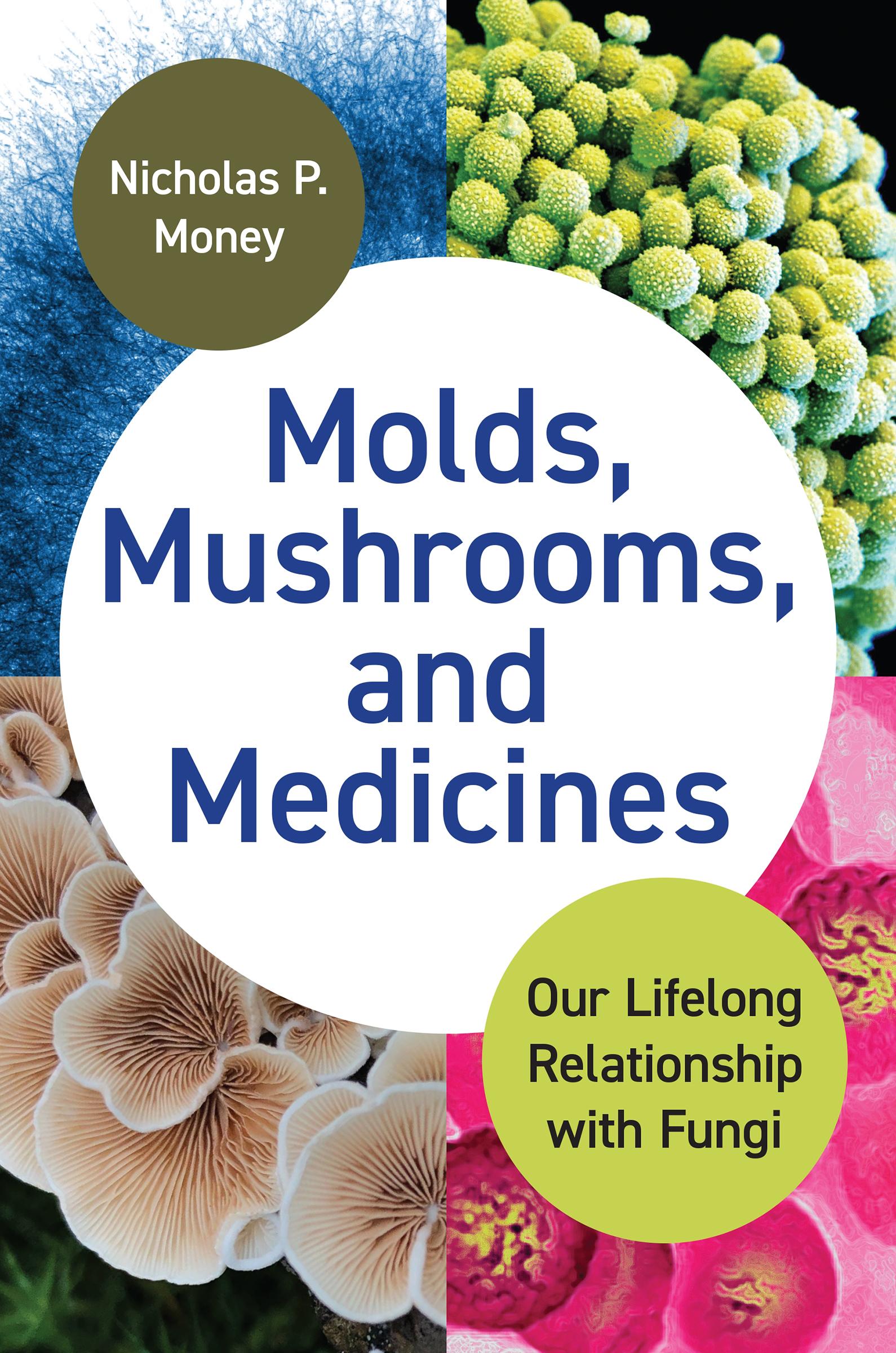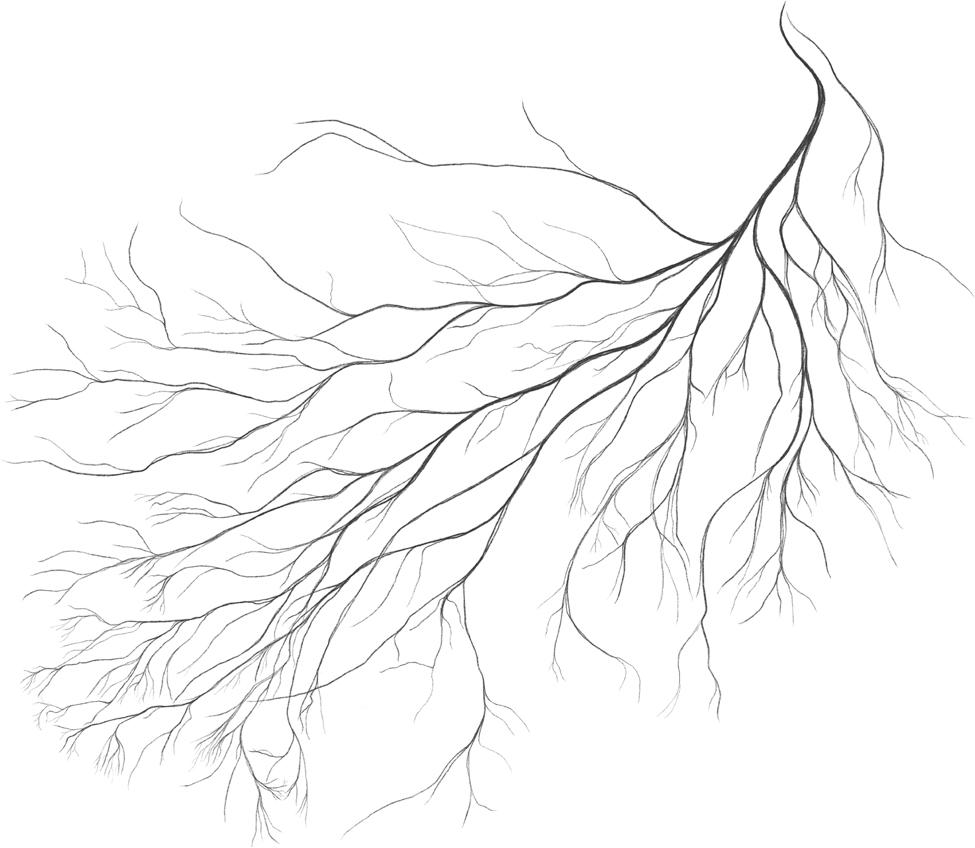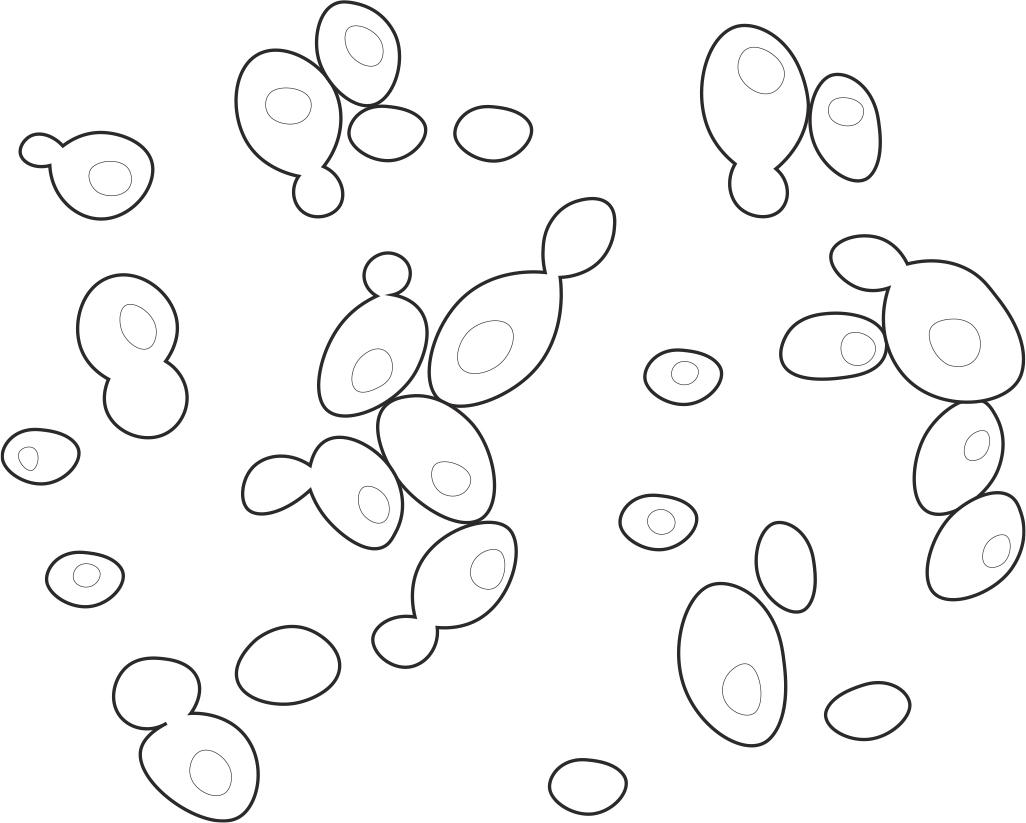Molds, Mushrooms, and Medicines
Our Lifelong Relationship with Fungi
Nicholas P. Money
PRINCETON UNIVERSITY PRESS
PRINCETON & OXFORD
Copyright © 2024 by Nicholas P. Money
Princeton University Press is committed to the protection of copyright and the intellectual property our authors entrust to us. Copyright promotes the progress and integrity of knowledge. Thank you for supporting free speech and the global exchange of ideas by purchasing an authorized edition of this book. If you wish to reproduce or distribute any part of it in any form, please obtain permission.
Requests for permission to reproduce material from this work should be sent to permissions@press.princeton.edu
Published by Princeton University Press 41 William Street, Princeton, New Jersey 08540 99 Banbury Road, Oxford OX2 6JX press.princeton.edu
All Rights Reserved
Library of Congress Cataloging-in-Publication Data
Names: Money, Nicholas P., author.
Title: Molds, mushrooms, and medicines : our lifelong relationship with fungi / Nicholas P. Money
Description: Princeton : Princeton University Press, [2024] | Includes bibliographical references and index.
Identifiers: LCCN 2023030612 (print) | LCCN 2023030613 (ebook) | ISBN 9780691236308 (hardback) | ISBN 9780691236315 (ebook)
Subjects: LCSH: Fungi. | Materia medica, Vegetable. | Molds (Fungi). | BISAC: SCIENCE / Life Sciences / Mycology | NATURE / Plants / Mushrooms
Classification: LCC QK603 .M58 2024 (print) | LCC QK603 (ebook) | DDC 579.5—dc23/eng/20230908
LC record available at https://lccn.loc.gov/2023030612
LC ebook record available at https://lccn.loc.gov/2023030613
Version 1.0
British Library Cataloging-in-Publication Data is available
Editorial: Alison Kalett, Hallie Schaeffer
Jacket: Heather Hansen
Production: Jacqueline Poirier
Publicity: Matthew Taylor (US), Kate Farquhar-Thomson (UK)
Copyeditor: Susan Campbell
Jacket Credit: Jacket images (clockwise): Nataliya Hora / Alamy Stock Photo; Eye of Science / Science Source; BSIP SA / Alamy Stock Photo; Guido Blokker / Unsplash
Contents
Acknowledgments vii
1 Interacting: Encounters with Fungi from Birth to Death 1
Part I Inward
2 Touching: Fungi on the Skin 23
3 Breathing: Spores in the Lungs 40
4 Spreading: Opportunists in the Brain 57
5 Digestion: Yeasts in the Gut 73
Part II Outward
6 Nourishing: Molds and Mushrooms in Our Diets 93
7 Treating: Medicines from Fungi 110
8 Poisoning: Toxins in Mushrooms and Molds 125
9 Dreaming: Using Mushrooms to Treat Depression 142
10 Recycling: The Global Mycobiome 159
Appendix:GhostGutFungi 175
Notes 179
ListofIllustrations 225
Index 227
Acknowledgments
I WOULD LIKE to thank my agent, Deborah Grosvenor, and my editor, Alison Kalett, for making this book happen. Andor Kiss helped me to untangle the studies on ghost gut fungi, Michael Klabunde assisted with Latinisms, and my wife, Diana Davis, proofread the developing manuscript.
Interacting
ENCOUNTERS WITH FUNGI FROM BIRTH TO DEATH
Sing, heavenly Muse
What in them is dark
Illumine, what is low raise andsupport; Thatto the heightofthisgreatargument
Imay asserteternalprovidence,
Andjustify the ways ofmushrooms to men.
JOHN MILTON, PARADISELOST (1667), BOOK I, LINES 6, 22–26, AMENDED
FUNGAL SPORES cast a shadow over my childhood and almost killed me. One day in 1967, my five-year-old body began to run out of oxygen as my lungs shut down with inflammation, turning my skin blue before the ambulance arrived. I was born in the Thames Valley of southern England, which is a lovely place unless you are an asthmatic. Tree pollen and fungal spores fill the Oxfordshire air in summer and turn paradise into hell. There had been a thunderstorm that afternoon, which whipped clouds of these noxious particles into the sky. They filtered into my chest with each breath, causing my little airways to narrow and flood with mucus. A severe asthma attack feels like death. The nurses put me in an oxygen tent and gave me big orange tablets that were difficult to swallow, but after a day or two these antibiotics combined with a steroidal medicine reopened my lungs. More than fifty years later I can still see myself struggling to breathe under that clear plastic canopy, and I wonder how much this trauma led to my career as a mycologist and immersion in research on the spores of the fungi that put me there.
The fact that a boy plagued by spores became a scientist who has spent his adult life studying fungi, teaching students about their biology, and serving as an expert witness in lawsuits related to mold exposure is one of those serendipitous outcomes that define so many lives. The connections between my childhood and my profession did not occur to me until my brief experience as the patient of a therapist. He was a gentle, bearded man who asked insightful questions as he sought to help me understand why I was wrestling with thanatophobia, or death anxiety, which was distracting me from enjoying not being dead. Early in our conversations, I told him that I was an expert on fungi, a mycologist, then explained a little about
what a fungus is and what a fungus does. We talked about many other things—my health, marriage, and the challenges of parenting teenagers—before he circled back one day and asked: “Have you ever wondered why you are obsessed with death and with the microbes that you have described as the great decomposers?” We both laughed. It seems plausible that my asthma attacks were the foundation of it all: thanatophobia and what some would view as a morbid fascination with fungi that may have developed as a subliminal attempt at therapy, like the hypochondriac who becomes a doctor. On the other hand, maybe I just liked mushrooms.
What intrigues me now, and is the subject of this book, is the science of the human-fungus symbiosis, both the intimate and the extended relationship between fungi and our species. This relationship runs all the way from yeasts that grow on the skin and inside the gut to our uses of fungi as food and sources of medicines and, ultimately, to the mushroom colonies in soil that make life on land possible. Our closest physical ties with the fungi are invisible because the ones that live on the body are microscopic. These species grow amid the more numerous bacteria and viruses and are critical players in human health. Together, these microbes form the human microbiome, and we identify the fungal part of this intimate ecosystem as the mycobiome. (The prefix, myco-, from the Greek mykes, refers to all things fungal.)
The growth of immense numbers of fungi on the skin and inside the body is an unexpected and startling fact of science. Fungi are a vital part of the immense ecosystem of the human body, which operates as a partnership between trillions of human and microbial cells. We cannot live without these fungi. Touch the creased skin behind one of your ears or run your hands through your hair. You will not see them, of course, but fungal cells will cling to your fingertips afterward and every other time you rub, scratch, pick, or caress. They are essential partners, lodgers on all of us. Most of the fungi of the mycobiome are helpful, but some can turn on us when our immune defenses are weakened and cause terrifically damaging
infections. Fungi that normally grow on plants, rotting wood, compost heaps, and bird droppings can also settle on the body and attack our tissues if we are vulnerable. Human diseases caused by fungi are called mycoses, and these range from the irritation of athlete’s foot to life-threatening brain infections.
But our relationship with fungi does not end with the species found on the body. It widens to our conscious interactions with these microbes through their roles in our diet and as a source of powerful medicines. Science has been advancing in all of these areas of mycological inquiry, from studies that reveal the diversity of yeasts that grow on the skin to research on the use of psychedelic mushrooms in the treatment of depression. Once we expand our view of the give-and-take between humans and fungi to these deliberate uses of fungi, we discover a broader relationship, a human-fungus symbiosis that is a defining feature of our biology and culture. The term “symbiosis” is used in its original and most liberal sense in this book to describe helpful and harmful relationships between species. This is a perfect reflection of the incredible range of interactions between humans and fungi.
WHAT IS A FUNGUS?
Not plant, not animal, more animal than plant, and treated as the most mysterious kingdom of life in popular culture, fungi come in many shapes and sizes.1 The fungi we see most often seem too big to be categorized as microbes. These are mushrooms, which include the fairy-tale fly agaric, with its red cap spotted with white scales; shelf fungi, as big as dinner plates, that grow on decomposing logs; and slices of white button mushrooms on pizzas. The reason we call these species microorganisms is that the fungus that forms the mushroom is microscopic. For almost all of their lives, these organisms exist as spidery colonies of tiny threads called hyphae. Each thread, or hypha, is ten times thinner than a human hair. These filaments elongate and branch as they feed in soil and go about the process of rotting wood. The colony of branching hyphae is a
mycelium. When this mycelium has grown over a large area and absorbed enough food, it reverses direction and flows to the surface, where the threads merge to form mushrooms. Mushrooms with gills are the fruit bodies or sex organs of fungi that mist the air with spores. As the urge to reproduce becomes an imperative, the fungus moves from belowground to aboveground, changing its role from feeding to fruiting in the wondrous cycle of its life.
But most fungi never form a mushroom and are microscopic throughout their feeding and reproductive stages. These include aquatic fungi that swim in ponds, with tailed cells that resemble animal sperm; molds with stalks hung with sparkling spores that look like miniature chandeliers; and 1,500 species of yeasts. Yeasts include the species used in brewing and baking, whose Latin name is Saccharomyces cerevisiae, and another fungus, called Candida albicans, that lives on everyone and is best known, unfortunately, for its irritating nature as the vaginal yeast.2 (Latin names are kept to a bare minimum in this book, but some of the fungi are best known through their Latin names, and others are so obscure that they have never been given a common name.) Unlike fungi that grow as thin threads, which we call molds, yeasts develop as single rounded cells and produce buds, or daughter cells, on their surface.
MAKING SENSE OF THE MYCOBIOME
The entire human body is affected by fungi. Yeasts populate the skin and crowd around the hair follicles on the scalp; other species live in the ear canals, nasal passages, and mouth; and fungi swarm in the digestive and reproductive systems. The fungi are as small as the cells of our tissues and only become visible when they grow in such profusion that they form patches and pastes on the surface of the skin. But at this moment, and throughout our lives, fungal cells are feeding on the scalp and growing in the gut, consuming the mucus and dead cells that we discharge every day, and helping to control the bacteria. This microbial community is in constant flux—and so much of it was completely unknown until recently.
Fungi have been sidelined at meetings of microbiologists by studies on bacteria and viruses during my career and have been an afterthought in medicine. Earlier generations of mycologists misunderstood the fungi that they found on the body, regarding most of them as germs that damaged hospital patients and overlooking the significance of the yeasts growing peacefully on everyone else. Even when molecular genetic techniques began to reveal the incredible diversity and number of microbes in the gut, the fungi were missed because the methods were limited to identifying the DNA sequences of bacteria. This picture is changing at last, and new investigative methods are exposing the yeasts and molds—the blobs and filaments —multiplying from scalp to toes on the outside of the body and from mouth to anus on the inside. As this examination of the fungi has proceeded, the vision of the microbiome as a mostly bacterial territory has shifted to an appreciation of the diverse communities of fungi that fight and cooperate with bacteria through webs of chemical interactions to make a living on the body.3 Through these innovations we are beginning to fathom the extraordinary influence of the mycobiome on our health and well-being.
Even with this knowledge, the invisibility of the human mycobiome makes it difficult to comprehend. This is life-changing science in the sense that it permits a new view of the body, but it takes some imagination too. There is nothing cellular and microbiological about the way we look and feel. We picture ourselves as semisolid individuals, singular beings constructed with varying degrees of smoothness and raggedness, pert here, drooping there, and hanging together across the decades, but this half-truth belies our biological nature. For a more enlightened sense of self, we have to close our eyes to picture the body as a galaxy of cells, to say, and to believe, “I am a trinity, born from one cell, copied in trillions, and filled with other forms of life.”
Microbes that grow naturally on the body belong to the healthy microbiome. Different microbes populate different locations on the body, including the skin, ear canals, nasal passages, lungs, teeth,
digestive tract, and reproductive system. In each place, the body supports intermingled communities of bacteria, viruses, and fungi that form the bacteriome, virome, and mycobiome. The term mycobiome was used first to describe the fungi associated with plants in a salt marsh on the Eastern Shore of Virginia and now applies to the communities of fungi found in any location.4 For example, cultivated pineapples harbor forty-nine species of fungi, tropical corals host a jumble of marine fungi, and the gut of the largest living lemur, called the indri, is heaving with microbes acquired from its vegan diet and supplemented with fungi from the soil.5 Every animal, plant, and seaweed is crawling with fungi.
We see hints of the ancestral human mycobiome in monkeys and other apes, whose gut fungi vary among species.6 The community of fungi that is distinctively human has been remodeled from earlier mixtures of the fungi that grew on our hominid ancestors. This has involved losses and replacements of fungi as the mycobiome has adapted to changes in our diet and behavior. These evolutionary modifications have unfolded over the course of millions of years, but fungi have also come and gone on much shorter historical timescales. The communities of fungi on the body were rejiggered when we emigrated from our birthplace in Africa to other climatic zones and began fabricating clothing and footwear. Clothes and shoes affected the fungi on the skin, and the gut fungi were modified as we exchanged hunting and gathering for life in agricultural settlements.
WHAT THE FUNGI ARE DOING ON THE BODY
Fungi grow on humans because fungi grow everywhere they find food, and we are stuffed with energy. A pound of flesh has the same number of calories as a pound of ice cream, for an average of more than one hundred thousand calories per body.7 Colonies of yeasts consume a snippet of this when they digest the natural oils on the scalp. Other fungi live by breaking down bacteria and food particles as they are squeezed along the 1.5-meter-long tube of the colon. We are the unconscious hosts of a 24/7 buffet.
Although we are unaware of these fungi unless they cause inflammation and tissue damage, the immune system is policing them throughout the day. This defense mechanism is a marvel of natural engineering. White blood cells are the biggest players in immunology. These colorless cells flow in the blood alongside the more plentiful red blood cells. Red blood cells outnumber white blood cells by six hundred to one, and all of these red blood cells do exactly the same thing: they pick up oxygen from the fresh air entering the lungs when we inhale and carry it around the body; on the return path, the red blood cells release the carbon dioxide that we exhale. White blood cells have nothing to do with this import and export of gases and are more diverse in their roles. Following their own genetic programming, white blood cells called phagocytes move around the body, stretching themselves forward and retracting behind, just like amoebas that live in soil and water. Some of them spread from the bloodstream into the surrounding tissues and crawl into the linings of the lungs and the outer layers of the skin. Wherever they encounter microorganisms, they decide whether to kill them or give them a pass. White blood cells also rid the body of human cells that are damaged or start to grow in a way that can lead to the development of tumors. We would not last for very long at all without these defenders of the immune system.
The immune system manages the whole ecosystem of human tissues and embedded microorganisms. It allows specialized fungi to feed on the dead cells on the skin surface and the fatty secretions on the scalp and other fungi to multiply in the mucus linings of the digestive and respiratory systems. Turning to its more aggressive role, the immune system works continuously to eliminate insurgents, including the fungal pathogens that threaten to choke the whole enterprise. The resulting mixtures of fungi that live on an individual body are unique.8 The types of fungi differ in each location, and their numbers change as some grow and reproduce and others deteriorate and die. Our age and gender affect the numbers and kinds of microbes on the body too, and there is some evidence that hormonal
differences between the sexes may stimulate the growth of distinctive groups of fungi. Sweating stimulates the skin residents to proliferate, sun exposure kills others; gardeners pick up fungi from the soil and from plants; children transfer fungi to their parents and vice versa; and lovers swap fungi in bed. The number and identity of the spores flowing through the nose and into the lungs vary as we breathe, and the fungi in the mouth and digestive system are agitated with each meal.
Geography is another variable, because fungi are not distributed evenly across the planet. This means that there is a regional character to the mycobiome, with people in Africa partnering with different fungi than Asian populations. Diet has a dominating effect on the kinds of fungi and their abundance in the gut, with major differences between vegetarians, meat eaters, and consumers of lots of processed foods.9 Many illnesses affect the types and abundance of fungi, especially those in the gut, and traumatic injuries including severe skin burns enable fungi to penetrate deep into our tissues. The catalog of these sundry influences on the composition of the fungal communities on the body is endless.
The significance of human-fungal interactions is surprising, at first, when we consider the scarcity of the fungi compared with the bacteria in the microbiome. There are only 40 billion fungal cells in the human gut, compared with 40 trillion bacterial cells, a thousand bacteria to each fungus.10 Heaped together, the bacteria weigh as much as a cup of sugar, and spread in a single line, they would encircle Earth. The less numerous but far larger fungal cells weigh no more than a raisin, but their combined surface area is impressive— equivalent to an eight-person dining table. The interior lining of the large intestine covers a similar area, and even though many of the fungi are buried in the dissolving food and developing feces, these calculations reveal that the fungi offer a lot of real estate for chemical interactions with the body. The molecule-by-molecule transactions between the immense surface presented by the fungi and the
immune system go a long way toward explaining how such tiny organisms can have such a profound effect on our health.
The impact of the fungi on the health of the gut is a controversial subject among microbiome experts. Some view the fungi as critical players in the internal ecosystem, while others believe that their activities are eclipsed by the overwhelming number of bacteria.11 These differing viewpoints have arisen because the science of the mycobiome is moving at lightning speed, and conclusions about the influence of the fungi on some health conditions swerve from study to study. But the truth is unfolding, and this book will share consensus views when they are available and highlight other areas of mycobiome research where we remain puzzled.
Uncertainties come from many sources. The first and most formidable of these is the question of cause versus effect.12 If we find differences in the abundance of fungi in people suffering from a particular illness, it can be very difficult to determine whether the fungi are responsible for the illness or whether the change in their number is a consequence of another issue with the patient’s health. Either way, treating the fungus may be effective at alleviating some of the most distressing symptoms of the complaint. Examples of these conditions that do not seem to be caused by fungi but are associated with shifts in the onboard populations of fungi are explored in the chapters that follow. The second diagnostic problem comes from the awesome power of the modern genetic techniques that allow us to detect the dead cells of fungi that are passing through the intestine and may have entered the body in our food. This makes it difficult to identify the living species that are long-term residents in the gut, which are more important in the health of the digestive system than the remains of dietary migrants.
While the relevance of the fungi in understanding some aspects of healthy gut function is debatable, a substantial body of research has proven that fungi belong to communities of microorganisms in other parts of the body where they are crucial in health and disease. There is no question about the importance of the fungi on the body surface,
where they support skin health and can also cause allergic responses and unsightly infections. Similarly, we know that fungal spores are powerful triggers of asthma and other allergic illnesses in the respiratory system. Lastly, it is important to recognize the connections between the mycobiome in different parts of the body. The effects of the gut fungi on the immune system can influence the development of health conditions elsewhere, and fungi can also move physically from one location to another—from skin to gut and vice versa. With so much attention to the effects of fungi on human health, this is the perfect time to explore this phenomenal symbiosis.
WHEN THINGS GO WRONG
Everyone is damaged by fungi at some time in their lives. Hundreds of millions of people suffer from allergies caused by fungal spores, and fungal infections range from skin irritation and toenail disintegration to the foulest flesh-melting diseases ever pictured in a pathology textbook. The World Health Organization (WHO) prioritized the surveillance of serious fungal infections in 2022 with the publication of a list of nineteen species that pose the greatest threat to public health.13 This was in response to the rising numbers of fungal infections and difficulties in diagnosing and treating these serious illnesses. Mycoses kill 1.5 million people every year, and the threat of the severest infections is growing with the emergence of strains of yeasts that are resistant to antifungal medicines. The burden of these illnesses is heightened in the developing world, where access to adequate medical care is limited, and in more affluent countries with aging populations that are more vulnerable to infection. Poisoning is another hazard of our relationship with the fungi, resulting from the mistaken identification of wild mushrooms by foragers and by consuming the toxins produced by molds that grow on harvested grain. These harmful interactions complete the picture of our relationship with the fungi, which runs from beauty to the beast, the yin and the yang of the human-fungus symbiosis.
It is easy to disregard the fungi that support our health because they are invisible, and we can live in blissful ignorance of the dark side of mycology if we are fortunate to avoid infections. But wisdom comes from familiarity with this subject. The types of fungi that live on the body and their levels of activity vary according to where we live, what we eat, and whether we work indoors or outdoors. Changes in our health, drugs that we are prescribed, and the use of consumer products including toothpaste, shampoos, and body lotions modify our closest relationship with fungi too. No amount of grooming will leave us unfungal, which is a good thing because we would be in bad shape if we abolished our partners. A body without fungi would be as barren as a forest without mushrooms. Equipped with this self-knowledge, we can seek opportunities for correcting imbalances in this intimate relationship.
BEYOND THE BODY: THE EXTENDED SYMBIOSIS
Beyond the body, fungi inhabit our pets, are active in damp places in our homes, and flourish on fruits and vegetables in the kitchen. Pet dogs and cats are covered with yeasts, bathrooms are mycological playgrounds, and we consume fungi clinging to salad ingredients without giving them a thought—until the tomatoes sprout hairs. Physical contact with these fungi is certain, continuous, and consequential. There is a historical character to these passive interactions with the fungi in the environment, which has changed over thousands of years and continues to shift in the modern world. The transition from hunter-gatherer and nomadic lifestyles to agricultural settlements around ten thousand years ago had a profound effect on our interactions with fungi, by exposing us to masses of fungal spores emanating from moldy grain stores and to toxins in food made from these spoiled cereals. Asthma and other allergies to fungal spores were born from changes in farming over the millennia, and the crowding of populations in cities promoted the spread of skin infections by ringworm fungi. The human-fungus relationship has also operated on a more conscious level with the
incorporation of fungi into our diet, from foraging for wild mushrooms and cultivating an increasing selection of species, to the growing popularity of nuggets of fungal protein or mycoprotein manufactured in bioreactors. The uses of fungi for food have also multiplied through cheesemaking, leavening bread, brewing beer, and making wine. By domesticating the fungi that enrich our diet, we have folded the natural environmental actions of these microbes into human culture and driven changes in civilization over thousands of years. All of the uses of the microscopic yeasts and molds for food are extensions of the human-fungus symbiosis.
Human interactions with fungi reach further through the biotechnological manipulation of fungi in drug manufacture. Fungal medicines include antibiotics to treat bacterial infections; cyclosporin, which prevents the rejection of transplanted organs; and “human” insulin and vaccines produced by genetically modified yeast. On the subject of fungal medicines, there is a lucrative global market for medicinal mushrooms with reputed life-enhancing and lifesaving benefits. Consumers spend tens of billions of dollars per year on mushroom extracts in the belief that they are effective at treating illnesses through their effects on the immune system. Few of the claims made by marketers have been tested, yet there is some hopeful news on this front with investments in clinical trials on mushroom products as anticancer agents. Drawing on stronger scientific evidence, “magic” mushrooms have outgrown their countercultural associations to be embraced as a promising treatment for clinical depression and post-traumatic stress. Through these ancient and modern cultural practices, we have amplified the positive influence of the fungi on our lives.
FROM WOMB TO TOMB: THE FUNGUS IS WITH YOU
Some years ago, when I gave seminars on the so-called toxic molds found in buildings, I would say, “We inhale their spores from first breath to last gasp.” This was true, but more recent findings show that the phrase provides an incomplete picture of our interactions
with fungi, which begin before birth and extend into the grave. The bookends must be extended because the fungi are with us from womb to tomb.
The view of the womb as a perfectly sterile incubator for the fetus has been consigned to medical history today.14 Our interaction with bacteria and fungi before birth is evident from genetic analysis of the meconium, which is the tarry liquid expelled by the newborn that develops in the fetal bowel. It is the initial deposit that comes to light in the first few days after birth and presages a lifetime per capita unloading of twelve tons of feces. Fungi that live within the mother’s vagina, particularly the Candida yeasts, are the commonest species detected in the meconium, which suggests that they colonize the amniotic fluid that surrounds the fetus and make their way into the gut of the baby when it swallows a little of the fluid before birth.15 Whether the traces of fungi found in the meconium affect the developing fetus is unclear, although we do know that the risk of premature birth increases as the number of microbes within the amniotic sac rises.16 Fungi may also spread all the way from the mother’s skin to the fetus through her bloodstream. Microbes are normally excluded from the blood, but when the tissue barriers are weakened, and leakage occurs, the bloodstream becomes a distribution system for bacteria and fungi. Inflammation of the gums or gingivitis, which develops into more serious forms of gum disease, or periodontitis, is one way that this can happen, raising the importance of oral hygiene and dental care for pregnant mothers.
Birth propels the baby into the microbial world, where it will be coated with fungi, filled with bacteria, infected by viruses, and breathe air brimming with all manner of irritating particles. As a fetus we receive sips of foreign proteins through the placenta and encounter the tiny populations of microbes in the amniotic fluid. Outside the womb we are deluged with microbes. Natural selection shaped Earth as a jungle of hospitable and hostile microbes over billions of years and each of us is forced to adjust to this carnival. The only possibility for survival resides with our guardian angel—the
immune system—which allows us to explore this melee safely, cultivating microbes on the body that keep us healthy and warding off the germs that are more likely to kill us.
The deeper relationship with the microscopic starts after birth and depends on how we are born. If we surface via the natural route, the rupture of the amniotic sac leaves us squeezing through the vagina, where we receive a coating of bacteria and fungi from our mothers. The elastic fit of the birth canal around the baby ensures that the whole surface of the newborn receives this treatment. This is why the same strains of Candida yeast that grow in the mother’s vagina are found on the skin of infants born in this manner. Babies born by Csection become colonized by Candidafrom their mothers too, but by different strains of the yeasts that are more abundant on the surface of the mother’s skin. Difficulties in identifying fungal species make these studies challenging, but the overall pattern of vaginal microbes for vaginal deliveries and skin microbes for the C-section babies seems to be true. Our birthday is the first day of intensive schooling for the immune system that has been preparing for a microbiological hurricane for nine months.
Fungi are also conveyed through intimate contact with the mother and handling by others after delivery, and breastfeeding furnishes the infant with a different mix of species. According to recent experiments that took precautions to avoid contamination from the nipple surface, there are a lot of fungi in breastmilk. These studies show that a slurping infant absorbs more than two hundred million fungal cells a day, along with a similar number of bacteria.17 The majority of the fungi are yeasts, although there are traces of molds whose spores drift in from the air. It seems likely that fungi found in the milk get there through the bloodstream, like the ones that cross the placenta. Cells in the immune system may also pick up fungi from the nasal passages, lungs, and gut and carry them to the breast tissue where they are released into the milk. The couriers that perform this proposed role are the dendritic cells that prowl the body looking for microorganisms.
The transmission of microorganisms from mothers to their offspring is a widespread phenomenon in nature.18 The ubiquity of this seemingly deliberate donation of foreign organisms from mother to child suggests that some of them are critical for the vitality of the newborns of all animals. Most of these microbes appear to be beneficial, although some pathogens can also be relayed in this manner. Harmful microbes that pass from the human mother to child include the parasite that causes toxoplasmosis, the syphilis bacterium, and the human immunodeficiency virus (HIV). The fact that some pathogens take advantage of this intimacy is an inevitable drawback to the elementary processes that support the next generation. Natural selection has fostered microbe transfer because the advantages of readying the immune system for the outside world outweigh the disadvantages. The proof is evident in the success of the human reproductive mechanism and the fact that most infants do not succumb to microbial infection. Evolution is blind to a small proportion of casualties.
The split personality of the fungi as beauty and beast is exactly what we would predict from nature. The idea of some grand harmony among organisms is pure fantasy. Like every other scrap of life, fungi are engaged in a continuous struggle for existence. They collaborate with other organisms when there is mutual benefit, fight when their partners act too aggressively, and set up shop elsewhere by dispersing spores. Others have no time for collaboration and live by damaging host tissues from the moment they arrive. When we think about the beneficial fungi on the body and inside the gut, there is a tendency to ascribe intention to the relationship. This is wishful thinking. The fungi that grow on us fulfill a role that they have crafted, occupying a niche on the body—the scalp for example— where no other microbes do it better. During their evolutionary history, these fungi have developed the mechanisms for living on the dryness of the head, feeding on fats, and keeping the bacteria in check. As long as they do not irritate the skin, they are left in peace. When the environment between the hairs becomes unbalanced in
some way, the fungi get unruly, and accumulate in unusual numbers. This causes the skin to flake, and the immune system is alerted that something is amiss. Swings and roundabouts, day in and day out, ups and downs, and the same goes for the digestive system, vagina, and everywhere else that the fungi blossom on the body.
Fungi that adapt themselves to living in these different locations in the human ecosystem are the ones that need to be recognized as partners by the immune system and left alone. Much about this process of acceptance remains unknown, but the immune system of the baby seems to be tutored inside the uterus, during birth, and via breastfeeding, priming the newborn for a lifetime of encounters with microbes. Learning to work with some of the commonest kinds of fungi on the skin seems like a very good lesson. By acknowledging these harmless species and avoiding conflict, their growth may limit the ability of bacteria to coat the skin. We know that yeasts engage in chemical warfare with bacteria, and as long as these fungi do not proliferate to the point of becoming a nuisance themselves, they remain part of the healthy microbiome.
The newborn immune system is very fragile, with a small population of mobile cells to police the lungs and other tissues, but the number of these caretaker cells skyrockets to adult levels within the first days of life. This period of vulnerability to infection is one of the characteristics of infants that resulted in such a high level of historical mortality. Before the twentieth century, more than 25 percent of babies died in the first year of life, and half of all children died before they reached the end of puberty. Oral Candidainfections, or thrush, which spread to other parts of the body were a significant cause of infant deaths.19 A combination of better nutrition and hygiene, and the development of vaccines, antibiotics, and other drugs in the twentieth century transformed this picture, and today’s infant mortality rates range from 5 percent in some African countries to less than 1 percent in Europe.
Considering these statistics, it is difficult to find fault with modern medical practices, but we have introduced new hazards by increasing
the number of births by C-section and avoiding breastfeeding.20 Breastfeeding follows a disturbing pattern, with few countries meeting the WHO and UNICEF targets for infants.21 These regional differences are affected by ethnicity and culture as much as economic prosperity. They are alarming from a mycological perspective because the use of milk formula is linked to a greater risk of asthma and other allergies to fungi. The immune system needs to be introduced to grubbiness of the natural world from the get-go, and if this lesson fails, we may face a lifetime of struggle, responding to each fleck of fungus as if we are under attack. There is some evidence that this poor formatting of the immune system in childhood can also lead to autoimmune diseases later in life.22
The drama of the mycobiome does not end with infancy, and our interactions with fungi change as the years pass. The mycobiome in the digestive system is adjusted in response to the shift to solid food and later as we pursue more omnivorous, carnivorous, or vegetarian diets. The mycobiome is modified in adulthood, wobbling this way and that as we gain and lose weight, become pregnant, undergo cosmetic surgery and dental procedures, take antibiotics, are injured, and develop short-term (acute) or long-term (chronic) illnesses. We can pick up fungal infections at any time, although the likelihood of developing these mycoses increases among the elderly. Fungal infections increase with age as we develop illnesses that damage the immune system or require us to undergo therapies that lower these defenses to maintain transplanted organs or to treat cancer.
Moving to the tomb, we are the latest additions to the menu of meat dishes available to fungi that have been in the recycling business for hundreds of millions of years. Bacteria take care of a lot of the soft tissues in the human cadaver, leaving the keratin protein in hair and nails for a variety of specialized molds.23 Bones are infiltrated by fungal hyphae too, assisting their disintegration. These are the slowest processes of decomposition, but the disappearance of the hair, nails, hooves, horns, and antlers of dead animals in nature demonstrates the power of the fungi. We are sustained by this
planetary-scale nutrient cycling, together with the breakdown of plant debris, because we rely on the forests, grasslands, and agricultural ecosystems fertilized by the fungi. We would not be here without them. Mycorrhizal partnerships with living plants are another essential part of this broader relationship. We need fungi to work with plants as much as we need fungi to work with our bodies.
THE PAGES AHEAD
In the chapters that follow, we will explore the communities of fungi that live in every place on the body, pursue the historical and contemporary uses of fungi as food and medicine, and look at the ecological roles of the fungi beyond the body that function as an invisible life-support system. This book is a revelation of the human relationship with the fungi, the human-fungus symbiosis, from the fungi growing around the roots of our hairs to the colonies of mushrooms wrapped around the roots of forest trees. The chapters are organized into two sections that speak to the direction of the inquiry: part I, “Inward,” and part II, “Outward.”
Part I, Inward. Starting with the fungi on the skin surface (chapter 2), we slip inside the body with the spores that enter the lungs (chapter 3), and dive deeper with the yeasts and filaments that infect our internal organs (chapter 4). All tissues in the body can become colonized by fungi, which expands the activities of the restless mycobiome to the lungs, liver, kidneys, brain, and gut. Fungi in the gut are also part of the healthy digestive system, until this part of the mycobiome is disrupted and a whole range of illnesses related to immune dysfunction develop (chapter 5).
Part II, Outward. In the second set of chapters, we look at our interactions with fungi that grow outside the body, beginning with their importance in our diet, both as wild and cultivated mushrooms, and in the development of mycoprotein meat substitutes that are energizing the food industry (chapter 6). This concept of the extended symbiosis incorporates the modern use of drugs produced by genetically modified fungi in conventional medicine and the
controversial marketing of mushroom extracts in alternative or naturopathic medicine (chapter 7). From medicines we move to poisons and the dangers of consuming the wrong mushrooms and the spoilage of grains by molds that produce mycotoxins (chapter 8). Magic mushrooms and their use in the treatment of clinical depression and other serious mental health issues follows (chapter 9). Proposed links between the use of magic mushrooms and the origins of Christianity and other religions have been dismissed by theologists, but there is room to reconcile these viewpoints with a fresh and objective analysis of the evidence. In the final chapter we examine the ultimate extension of the human relationship with the fungi through our dependence on their wider ecological roles (chapter 10). We discover the body as an ecosystem flavored with fungi—a pulsing city or mycopolis—dependent on the fungi that support plants, create soil, filter rainwater, and spin the carbon cycle. This is the story of people and fungi, the human-fungus symbiosis that spans the local to the global, revealing how our lives are influenced through rich relationships with these extraordinary microorganisms.
